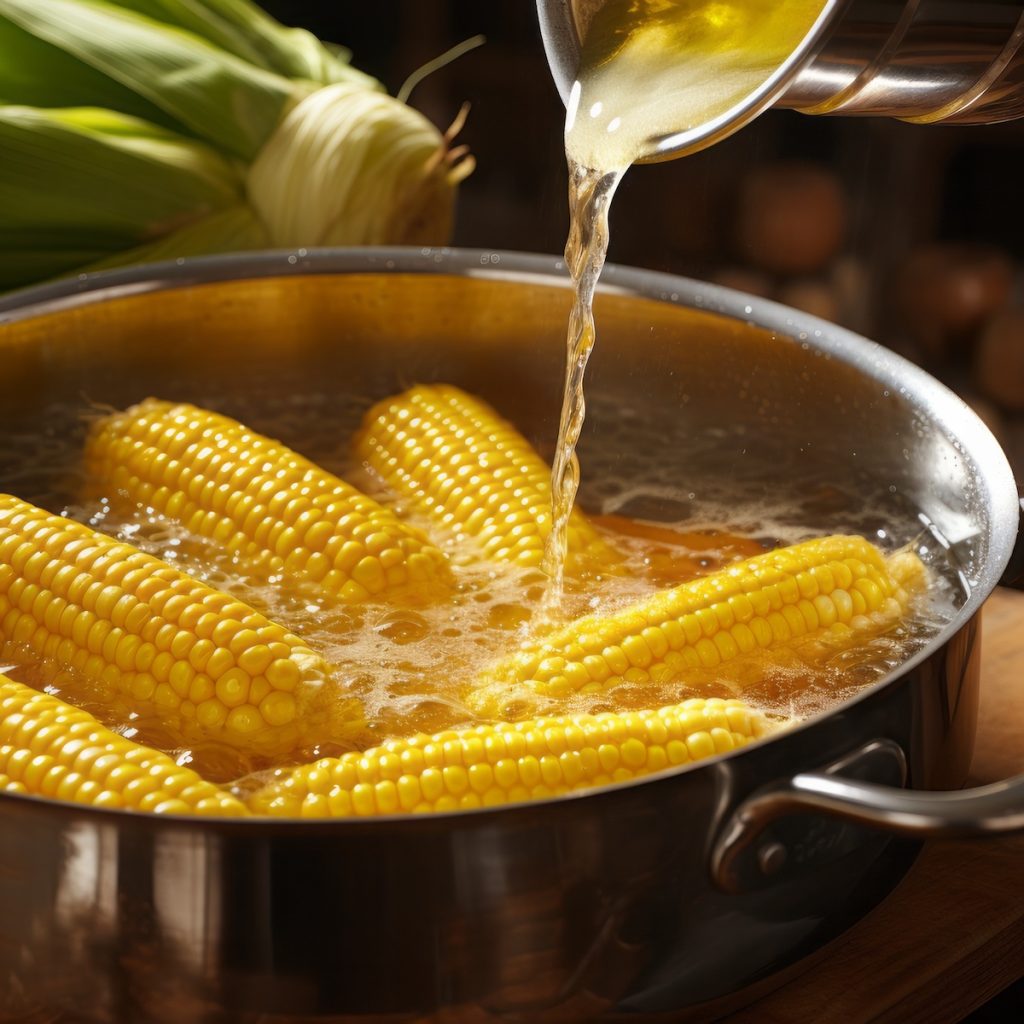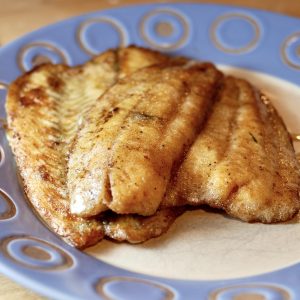How to Buy and Cook Sweet Corn on the Cob
I’m thinking of eating fresh Jersey corn every night for the next week. That’s because I’m on vacation with my family at the Jersey shore, and the corn is incredible this year. As sweet as my 4-year-old daughter’s smile, I can’t get enough of it. Although we’ve been serving it on the cob, there are dozens of ways to serve it off it. For example, you might see fresh corn in salads, cakes, salsas, chowders, or all by itself.
Check out my recipe for Corn Chowder
What’s In A Name?
Did you know there are over 200 varieties of sweet corn?
Although you rarely see fresh corn sold by name, it’s about time. What are they waiting for with names like “Bodacious” and “Butter and Sugar”? I asked at the local market what type of corn they were selling, and they looked at me like I was from New York City. If you want that much information, you must buy it at a farm stand. I would highly recommend this if you have one around.
I was surprised to learn that although grain corn (the stuff they feed cows) dates back 8,000 years, the first evidence of sweet corn is thought to be from New York around 1600 and was most likely cultivated by the Iroquois Indians.
How to Buy Fresh Corn
The most important thing to remember when buying fresh corn on the cob is that it converts sweet-tasting sugars to starches immediately after picking it. So ideally, you want to buy, cook, and consume it the same day it is picked or as close to it as possible. I have read that sweet corn has an 80:20 sugar-starch ratio when harvested, but within three days, that ratio will shift to 20:80. That’s the difference between really sweet-tender corn and mealy tough corn.
When buying, pick up each ear and look for ears that feel full and plumb in your hand. Look at the silk sticking out at the top; it should be golden pale, slightly sticky, and the more, the merrier.
Even though it’s sometimes messy and gets all over you when shucking the more silk, the more kernels of corn. You also want the husks to have an excellent green color – not brown. Even though most stores don’t appreciate you doing this, try popping one of the kernels with your thumbnail. If the juice from the kernel is milky, the fresher the corn. And don’t buy corn that has been sitting in the sun all day. The sun and heat will speed up that conversion of sugar to starch.
Look at the bottom of the ear of corn where it has been broken off at the stalk. If it has already turned brown, it most likely is at least two days old.
If you do not cook and eat fresh corn that day, store it in the refrigerator with the husks left on. Cooling it will help slow down the sugar-starch transformation. You may also want to remove the long stem and outermost big leaves to prevent moisture loss. Will it last more than a day? Sure, it will, but as the clock ticks, so does the sugar/starch ratio.
Prepping Fresh Corn – How to Shuck
Start by peeling the husk back from the top and removing it completely. Remove all the thin hairs (silk) that run from top to bottom. Use a vegetable brush or damp cloth if you are really fussy about those hairs. Finish up by breaking off the stalk at the bottom.
Cooking Fresh Corn on the Cob

There are many ways to cook fresh sweet corn. On top of your stove in a pot of water or steamer, on your grill, in your microwave (wrong choice), I’ve even tried cooking many ears for a party in the dishwasher (but with wishy-washy results).
The most popular way to cook fresh sweet corn on the cob in our family is boiling it, although my wife and I use different techniques to boil it, and both come out great. She likes to start with a large pot of cold water, add the corn, and bring it to a boil. When the water comes to a rapid boil, the corn is done.
I learned as a kid to start by boiling the water first and then add the corn to it and let it cook for about 5 minutes. It doesn’t matter that much. Both ways always produce delicious corn. I have read in some cookbooks to add a teaspoon of sugar to the pot of water to keep the corn tender. I don’t think it will hurt, but why bother if you start with fresh sweet corn?
Cooking Do Not Do’s
- Don’t add salt to the water. It only toughens the corn when it cooks.
- Don’t cool off hot corn by running under cold water. It will make the corn soggy.
- Don’t overcook; the kernels will get hard, and the corn will lose some of its sweet flavor.

Finishing it off
I suppose you can get “gourmet” and add all sorts of fancy seasonings, but I like my sweet corn simple with just butter, salt, and pepper. Sometimes, simple is better.
Applying the butter depends on whether we have guests or just family. With guests, I cut a pat of butter and apply it with my knife or fork, but when it’s just family, I will often roll it right on the stick of butter on the butter dish. (Oh, if my mom should read this newsletter!) This gets the job done well but makes a mess out of the stick. It leaves that deep indentation, making it look like a canoe.
My four and 6-year-old daughters like to apply the butter with their hands. The only reason they like corn is as a vehicle for butter.
One of my earliest childhood memories of eating corn is at my grandparent’s down at the Jersey shore. My grandmother always gave us kids those nifty corn holders that looked like little ears of corn with two prongs sticking out that you would stick into the ends so you didn’t burn your fingers, although someone inevitably got stuck with the sharp prongs.
I also strongly recall my grandfather cutting each row of corn kernels down the center with his knife to help him with digestion. As I write this, I must smile because the images are so clear. Corn on the cob is a real comfort food you typically eat with family and friends, so I can only suggest you find the last of the summer corn and create some great memories yourself.













3 Responses
If being served with fresh hot bread (I like my carbs *shrug*) it works well to generously butter the bread and then wrap it around the corn as a method of drenching the corn in butter without burning your hands. This technique is especially advantageous if you forgot to get the butter out of the refrigerator ahead of time.
I use a microwave steamer for my corn. On high for 4 minutes. DELICIOUS! SWEET! AND TENDER!
Use the microwave for a fast and easy cooking method of one or two ears. A friend at work told me not to hull it. Cut the stem end as close to the end of the ear as possible. Cook ears with husks on them on high for 3 minutes. Let it cool for a minute. Husks and silk can be removed easily. And no dirty pot to wash either!